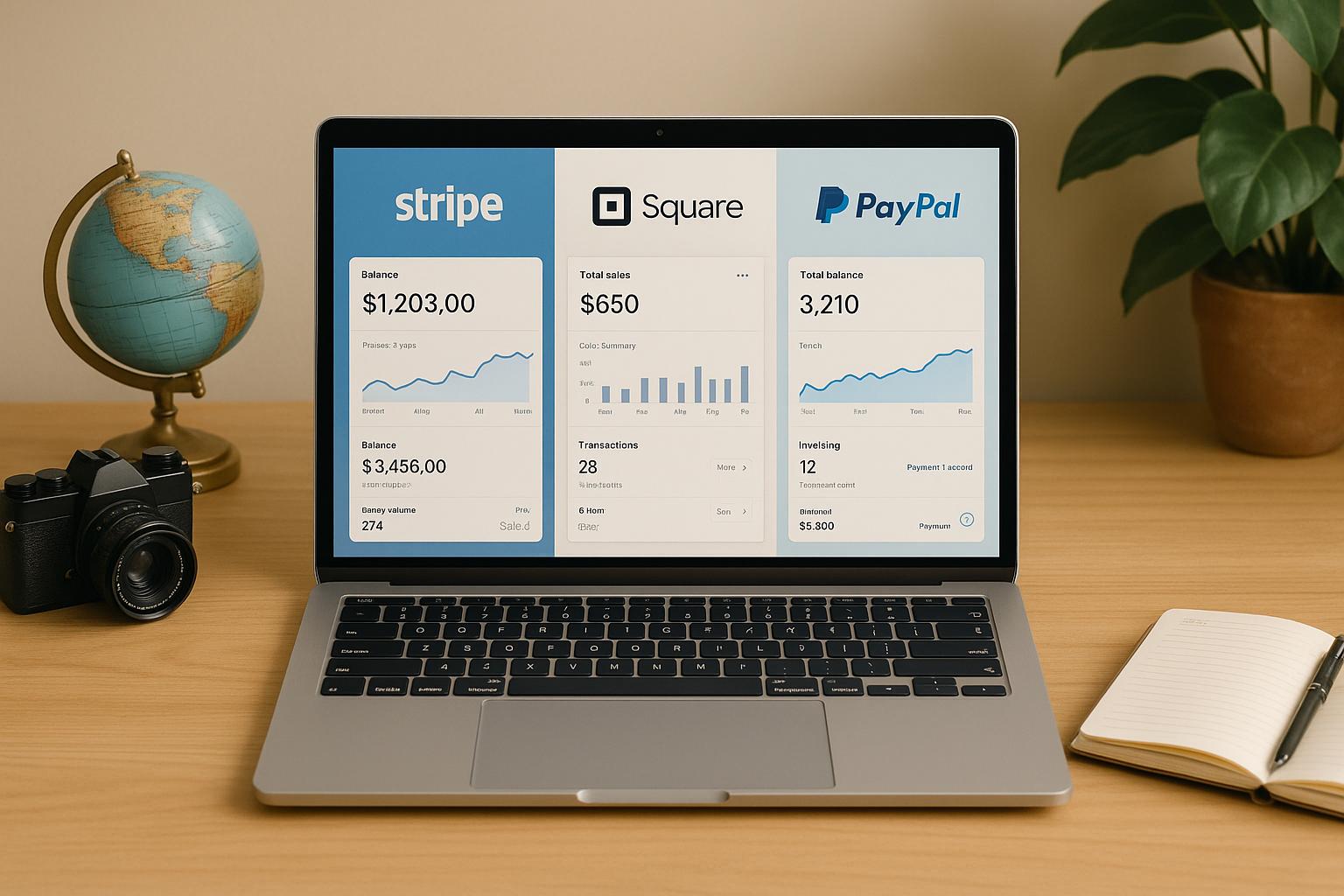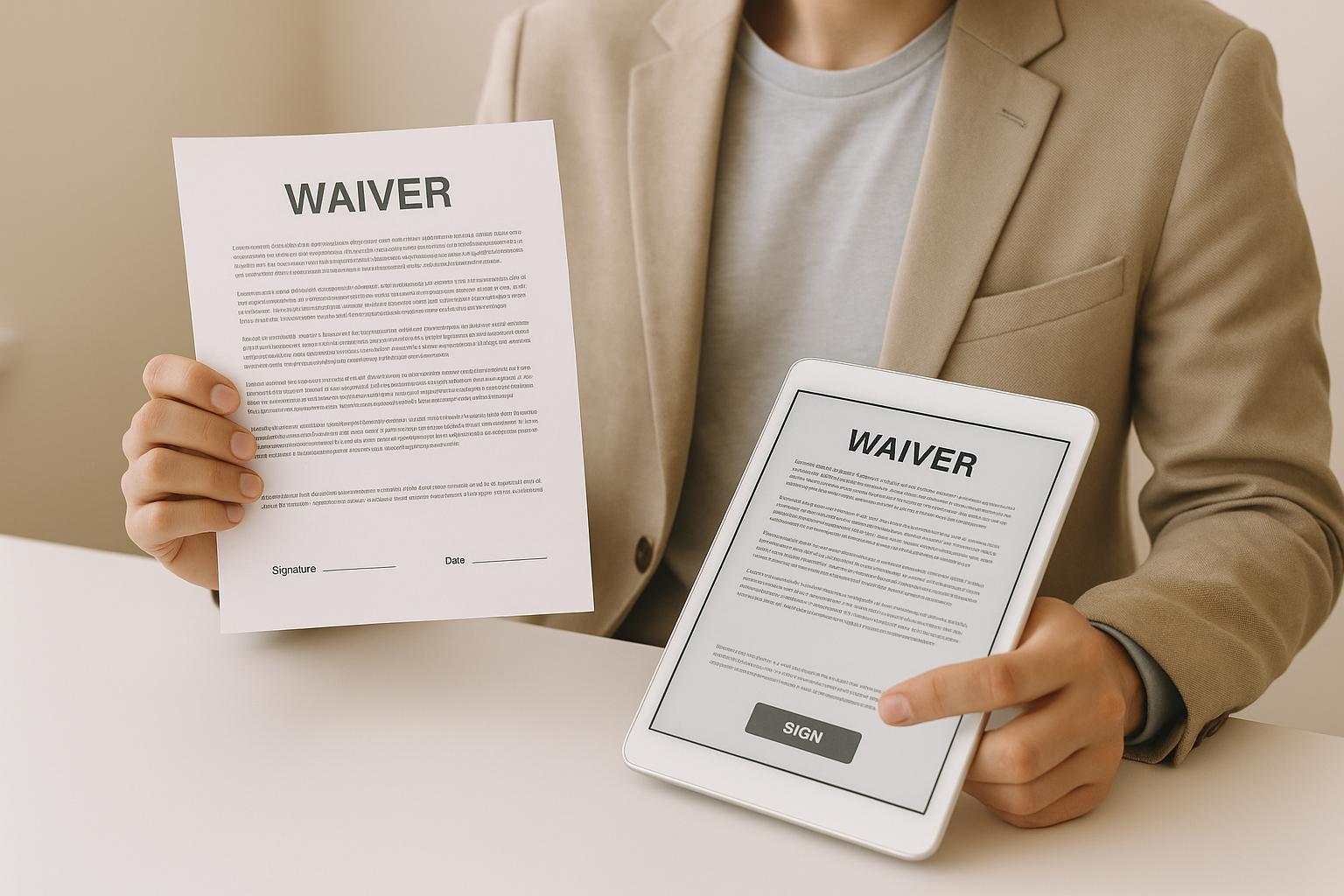Tour companies face unique challenges with payments: handling international transactions, managing multiple currencies, and reducing cart abandonment - all while maintaining profitability. Stripe, Square, and PayPal are top options for payment processing, each tailored to different needs.
- Stripe is ideal for businesses needing extensive customization and global reach. It supports 135+ currencies, offers a developer-friendly API, and has lower currency conversion fees (1%). However, it requires technical expertise and lacks live support.
- Square excels at in-person payments, with simple hardware and no chargeback fees. It's great for local operators but limited to USD for U.S. accounts and available in only 8 countries.
- PayPal is a trusted name for online payments, with global availability in 200+ countries. It’s easy to set up and integrates with popular booking platforms but has higher fees for international transactions and currency conversions (3%-4%).
Quick Comparison
| Feature | PayPal | Stripe | Square |
|---|---|---|---|
| Currencies Supported | 25 | 135+ | USD only (U.S.) |
| International Reach | 200+ countries | 45+ countries | 8 countries |
| Chargeback Fees | $20 (non-refundable) | $15 (refundable) | $0 (Square absorbs) |
| Currency Conversion Fee | 3%-4% | 1% | Not applicable |
| Best For | Online/global payments | Customizable/global | In-person/local |
Each platform has strengths and limitations. Choose based on your business needs: Stripe for scalability, Square for simplicity in local payments, or PayPal for global trust and ease of use.
What is a Payment Gateway & Which One Should You Use as a Tour Operator?
1. Stripe
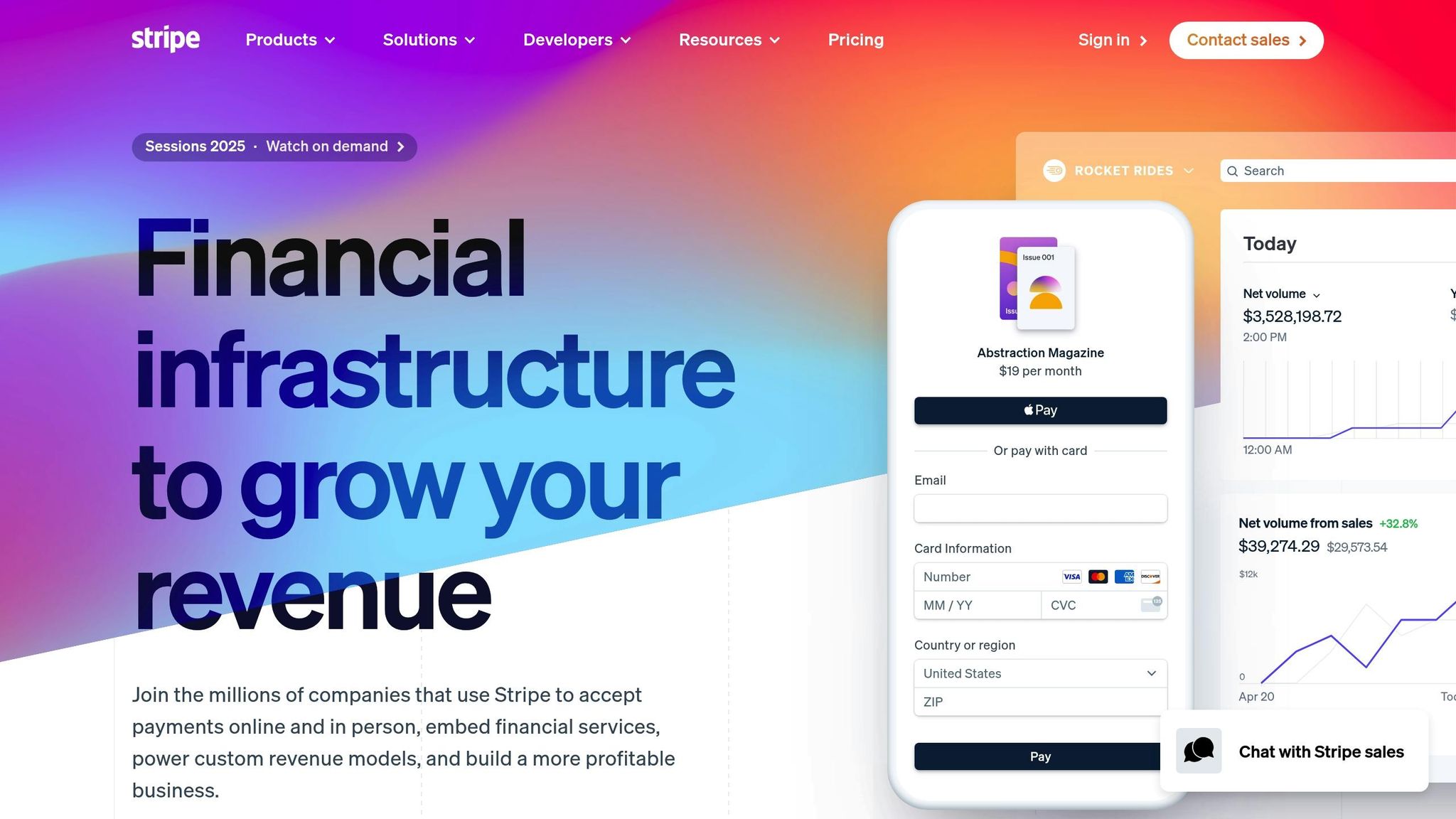
Stripe positions itself as a payment processor tailored for developers, offering the tools needed to handle even the most complex booking scenarios. It provides businesses with the ability to accept a variety of payment methods - ranging from major credit cards to popular digital wallets - while ensuring robust fraud protection for high-value transactions.
Payment Processing Features
Stripe’s payment system is built to handle secure transactions efficiently. It adjusts to business patterns, reducing false declines and ensuring smoother approvals. This reliability forms the backbone of its integration capabilities.
Integration with Booking Systems
One of Stripe’s standout features is its API-based setup, which allows seamless integration with custom booking platforms. It supports advanced functionalities like split payments and automated refunds, making it a flexible choice for businesses with unique needs.
Pricing Model
Stripe operates on a clear, per-transaction pricing model with no monthly fees. For businesses handling large transaction volumes, custom pricing options are available. Additionally, Stripe offers analytics tools to help businesses maximize their revenue.
Key Benefits
Stripe’s developer-friendly ecosystem enables businesses to expand their payment capabilities. Features like dynamic pricing, support for more payment methods, and automated tax management can be added to meet growing demands.
Challenges for Tour Operators
While Stripe offers powerful tools, its advanced features often require technical expertise. Smaller operators might find the setup process challenging, and the lack of live customer support can slow down resolution for urgent issues.
2. Square
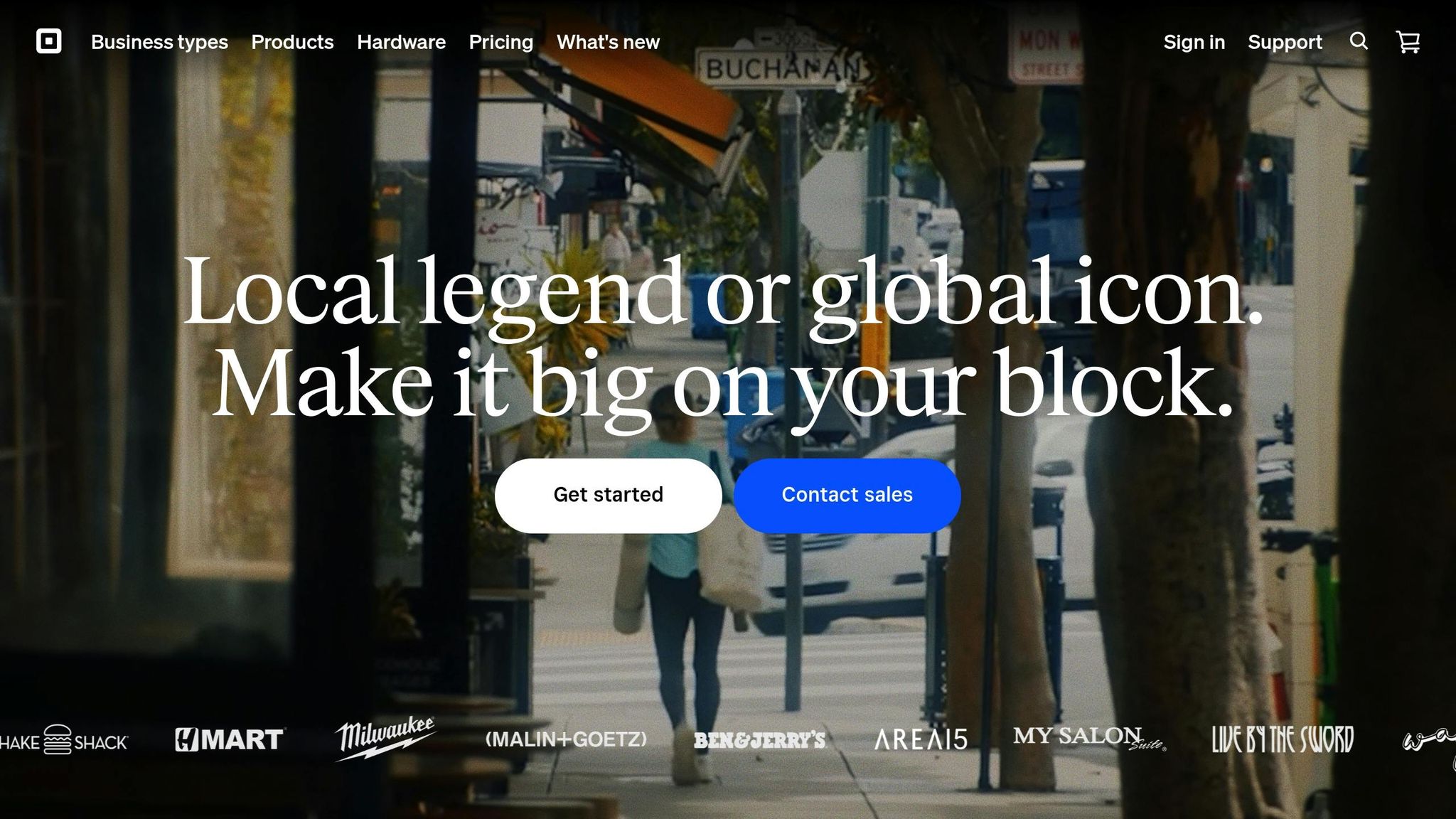
Square stands out for its ability to handle both in-person and online payments seamlessly. This makes it a great option for tour companies juggling walk-in customers at ticket booths and online bookings at the same time.
Payment Processing Features
Square supports all major credit cards and contactless payment options like Apple Pay and Google Pay. The platform automatically updates to include new payment methods as they become available. Beyond simplifying transactions, Square offers integration options that help streamline day-to-day operations for tour businesses.
Integration with Booking Systems
Square provides a range of integration options, including an App Marketplace and a customizable Bookings API, making it adaptable to various business needs. It connects with popular booking platforms such as FareHarbor, Checkfront, Rezdy, and Bookeo. These integrations allow for real-time syncing of booking details, inventory updates, and customer data between your booking system and Square's payment platform.
"Integration with Bookeo was smooth." - Kevin Gray, Square seller for 10 years
FareHarbor, for instance, offers a straightforward and free setup process. In May 2025, FareHarbor introduced a new integration with Square, enabling tour operators to centralize customer data, improve inventory tracking, and streamline sales reporting in real time.
Pricing Model
Square uses a simple per-transaction fee structure, while the integrated booking platforms have their own pricing tiers. For example, Bookeo’s plans range from $14.95 to $119.95 per month, and Rezdy offers options between $49.00 and $249.00 per month. Checkfront provides a 21-day free trial, giving businesses a chance to test its compatibility before committing.
Key Benefits
One of Square’s biggest advantages is its simplicity and hardware integration. Tour companies can manage both in-person and online payments through a single system. Additionally, Square includes tools for inventory management, customer relationships, and basic analytics - all without requiring extra software.
Challenges for Tour Operators
While Square excels in many areas, some users have pointed out interface limitations. For example, one review highlighted that Bookeo’s integration, though functional, has a "dated interface" that "feels like the mid-2000s". Despite these minor design drawbacks, Square remains a practical and efficient solution for tour operators.
sbb-itb-3dd36ef
3. PayPal
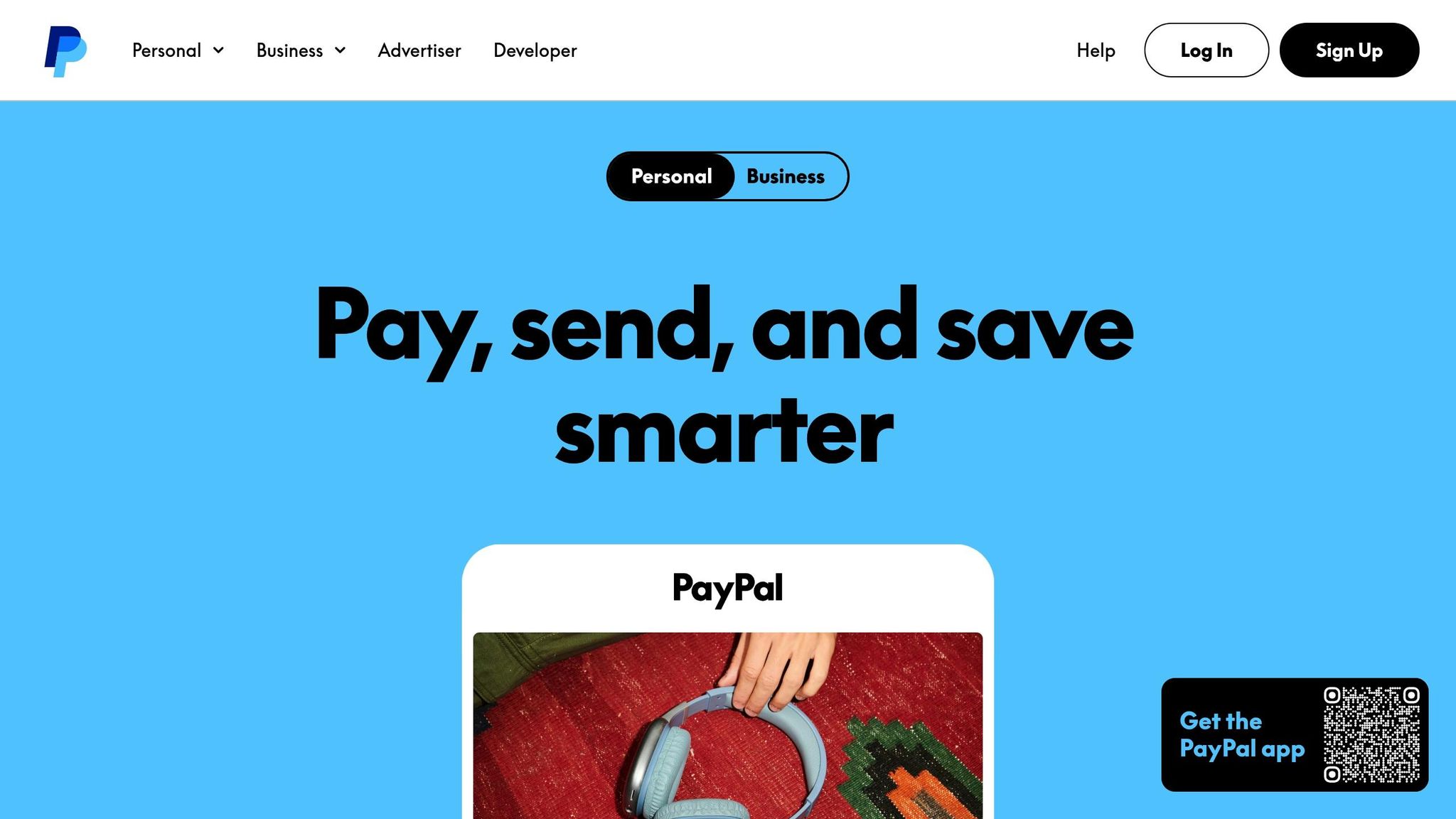
PayPal is a trusted name in online payment processing, offering tour companies the benefit of global recognition and customer confidence. It supports both domestic and international transactions, complete with built-in currency conversion.
Payment Processing Features
PayPal accepts major credit cards, debit cards, and bank transfers, and customers don’t even need a PayPal account to make payments. With fraud protection and dispute resolution services, it provides an added layer of security for both tour operators and their clients. Its flexibility also makes it easy to integrate with a variety of booking platforms.
Integration with Booking Systems
PayPal works seamlessly with popular booking platforms like Viator, GetYourGuide, and TripAdvisor Experiences. Adding PayPal as a payment option is as simple as updating the gateway settings within these platforms. For businesses with specific technical needs, PayPal’s detailed API documentation simplifies custom integrations.
The Express Checkout feature is another standout. It lets customers complete their bookings with just a few clicks, which is especially helpful during busy travel seasons when users are comparing multiple options. This convenience can significantly reduce cart abandonment rates - a common issue in the tour booking process.
Pricing Model
PayPal charges 2.9% + $0.30 per domestic transaction, while international transactions incur fees ranging from 4.4% to 5.4%. Businesses can also opt for PayPal Pro at $30 per month, which offers more customization options and potentially lower fees for qualified users.
For international transactions, currency conversion fees add an extra 3% to 4%. Tour companies catering to global travelers should account for these costs when setting their prices.
Key Benefits
PayPal’s greatest strength lies in its global reach and the trust it inspires among customers. Many international travelers prefer PayPal because it eliminates the need to input sensitive credit card information on less familiar websites. Its buyer protection policies also offer peace of mind for customers booking tours with companies they haven’t used before.
The platform includes advanced reporting tools, which allow tour operators to track seasonal trends and identify their most profitable customer segments. Additionally, PayPal’s mobile app is a handy tool for managing transactions and processing refunds on the go - ideal for tour guides handling last-minute bookings or cancellations in real time.
Challenges for Tour Operators
While PayPal offers many advantages, it’s not without its downsides. The dispute resolution process often leans in favor of customers, which can be frustrating for merchants. PayPal also has a tendency to hold funds for new accounts or those flagged for unusual activity, potentially causing cash flow issues for seasonal businesses.
Another drawback is the higher fees for international transactions, which can make PayPal less appealing for tour companies that primarily serve overseas clients. On top of that, some operators have reported slow customer service response times during peak travel seasons, when resolving payment issues quickly is crucial.
Pros and Cons
Selecting the right payment processor for your tour company means carefully evaluating the strengths and limitations of each option. Here's a side-by-side comparison of how Stripe, Square, and PayPal measure up for tour operators:
| Feature | PayPal | Stripe | Square |
|---|---|---|---|
| Multi-Currency Support | 25 currencies | 135+ currencies | USD only (for U.S. accounts) |
| International Availability | 200+ countries | 45+ countries | 8 countries only |
| Developer Friendliness | Basic API, limited flexibility | Highly developer-friendly, extensive documentation | Moderate support, mostly POS-focused |
| Integration Options | Widely supported by booking platforms | Excellent API with high customization | Limited to Square ecosystem |
| International Card Fees | +1.5% + higher base rates | +1.5% on foreign cards | Not supported for cross-border |
| Currency Conversion | 3%-4% | 1% | Not applicable |
| Chargeback Fees | $20 (non-refundable) | $15 (refunded if dispute is won) | $0 (Square absorbs the cost) |
Below, we dive deeper into these differences and explore the specific pros and cons of each platform for tour operators.
PayPal's Strengths and Weaknesses
PayPal stands out for its ease of integration with most booking platforms, making it a convenient option for many tour companies. However, it comes with challenges. PayPal tends to favor buyers in disputes, which can pose difficulties for operators dealing with cancellations due to weather or no-shows. Additionally, its currency conversion fees, ranging from 3% to 4%, can quickly add up for international transactions, making it a pricier choice for global operations.
Stripe's Advantages and Challenges
Stripe shines when it comes to flexibility and international support. Its developer-friendly API allows for extensive customization, which is ideal for companies needing tailored solutions. Stripe also offers the lowest currency conversion fee at 1%, and its $15 chargeback fee is refunded if you win the dispute. On the downside, implementing Stripe often requires technical expertise, and its higher fees for international transactions can impact profits on overseas bookings.
Square's Benefits and Limitations
Square is a strong choice for in-person transactions. Tour guides who handle face-to-face payments will appreciate the user-friendly hardware and the fact that Square absorbs chargeback costs entirely. The setup process is also simple and straightforward. However, Square's international limitations are a major drawback. U.S. accounts can only process USD payments, and the platform does not support cross-border transactions. Additionally, Square is only available in eight countries, which limits its usability for operators with a global customer base.
Integration Considerations
Ultimately, the best payment processor for your business depends on your specific needs. If you prioritize simplicity, PayPal is an excellent choice. For those needing robust customization and international support, Stripe is a top contender. And if your focus is on seamless in-person payments, Square could be the ideal fit. Carefully assess which platform aligns best with your technology stack and the preferences of your customers.
Conclusion
When navigating the complexities of international and in-person transactions, choosing the right payment processor boils down to understanding your business's specific needs and priorities.
PayPal stands out as a go-to option for small to medium-sized tour companies. Its straightforward setup, ease of use, and ability to operate in over 200 countries make it a solid choice for businesses catering to international customers. While its transaction fee of 2.9% + $0.30 might seem steep, the global recognition and trust associated with PayPal often justify the cost for smaller operations.
Square shines for businesses focused on in-person payments. Local tour operators and guides will find its intuitive hardware and the coverage of chargeback costs particularly appealing. However, its limitation to USD processing for U.S.-based accounts makes it less suitable for businesses with a strong international presence.
Stripe is ideal for tech-savvy operators or those leveraging booking systems with built-in Stripe integration. Its flexibility and customization options make it a favorite for businesses looking to scale. With support for over 135 currencies and a competitive online transaction fee of 2.9% + $0.30, Stripe is a strong contender for companies with global ambitions.
Ultimately, the best payment processor is the one that aligns most closely with your current operational needs. PayPal is a great fit for online and international transactions, Square excels in local, in-person payments, and Stripe offers unmatched customization for growth-driven businesses. Start with the option that meets your immediate goals, and consider adding others as your business expands.
FAQs
What should tour companies consider when choosing between Stripe, Square, and PayPal?
When choosing between Stripe, Square, and PayPal, tour companies should weigh a few crucial factors to make the best decision:
- Payment processing: Look into how each platform manages online and in-person transactions. Check support for credit cards, digital wallets, and other popular payment options.
- Integration with booking systems: Determine how seamlessly the platform works with your booking software. Does it allow for customization to match your workflow?
- Pricing: Compare transaction fees, monthly charges, and any extra costs to identify the most budget-friendly option for your business.
Ease of use and worldwide accessibility are worth considering too. PayPal stands out for its straightforward interface and global reach, making it a go-to for international transactions. Stripe shines with its robust developer tools, perfect for businesses needing advanced customization. Meanwhile, Square is ideal if you’re looking for an all-in-one solution that handles both online and in-person sales. Ultimately, the best choice will depend on your specific business needs and what your customers prefer.
What are the differences in how Stripe, Square, and PayPal integrate with booking platforms?
Stripe, Square, and PayPal each bring their own flavor to integrating with booking platforms, offering varying levels of complexity and features. Stripe stands out for its flexibility and customization options, making it a favorite among developers. However, tapping into its full potential often requires some technical know-how. Square, by contrast, focuses on simplicity. Its integration process is straightforward, making it a solid pick for small businesses looking for ease of use. PayPal takes the crown for accessibility, offering an easy setup that doesn’t demand advanced technical skills - perfect for those who want to get started quickly.
When deciding which payment processor fits your needs, think about your technical capabilities, the features you prioritize, and how well the processor meshes with your booking platform.
What challenges might tour operators face when using Stripe, Square, or PayPal?
Tour operators often face unique hurdles when working with different payment processors. Stripe, for instance, stands out for its flexibility and developer-friendly tools. However, its advanced features can be daunting for those without a technical background. On the other hand, Square offers ease of use, but it might lack the advanced options or integrations some tour businesses require for more tailored workflows. Then there's PayPal, a globally recognized name, but it may pose challenges for high-risk or high-volume operations and isn't always the easiest to navigate for large-scale management.
The key to finding the right payment processor lies in understanding your business's specific needs - its size, technical capabilities, and payment requirements. A thoughtful evaluation of these factors can help you sidestep unnecessary complications.

